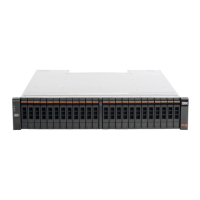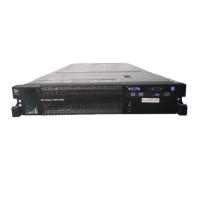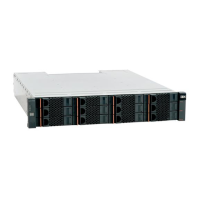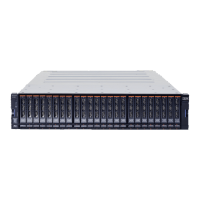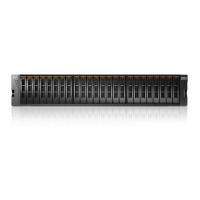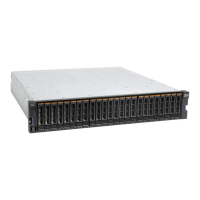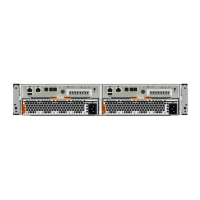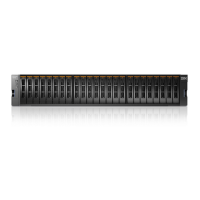Recovering a GPFS file system
Use this procedure to recover a GPFS file system after a storage system failure has
been fully addressed.You should use this procedure only under the supervision of
IBM support.
Before you begin
Prerequisites:
v You are running this procedure on a file module.
v You are logged on to the CLI as member of the “SystemAdmin” group.
v GPFS must be active on both nodes.
For storage system recovery, see the procedure for recovering a storage system.
Restriction:
To recover the filesystem for reasons other than storage node failure, for example,
to recover from multiple disks or storage controller failures, do not use GPFS root
commands without consulting with the next level of IBM support. Using GPFS
root commands to recover filesystems might result in further filesystem damage.
About this task
This procedure provides steps to recover a GPFS file system after a failure of the
block storage system. The file volumes were offline and are now back online after
a repair or recovery action. The disks referred to in this procedure are the volumes
that are provided by the block storage system.
Note: Because no I/O can be done by GPFS, it is assumed for these procedures
that the storage unit failure caused the GPFS file system to unmount.
After satisfying the prerequisites above, take the following steps:
Procedure
1. Verify that GPFS is running on both file modules by using the lsnode -r
command.
The column GPFS status shows active.
2. With GPFS functioning normally on both file modules, ensure that all disks in
the file system are available by running the lsdisk -r command. The
Availability column shows Up.
3. Issue the chkfs file_system_name -v | tee /ftdc/chkfs_fs_name.log1
command to capture the output to a file.
Review the output file for errors and save it for IBM support to investigate any
problems.
If the file contains a TSM ERROR message, perform the following steps:
a. Issue the stopbackup -d file_system_name command and the stoprestore -d
file_system_name command to stop any backup or restore operation.
b. Validate that no error occurred while stopping any Tivoli Storage Manager
service.
c. Issue the chkfs file_system_name -v | tee /ftdc/chkfs_fs_name.log2
command to recapture the output to a file.
d. Issue the startrestore command and the startbackup command to enable
Tivoli Storage Manager.
196 Storwize V7000 Unified: Problem Determination Guide 2073-720
